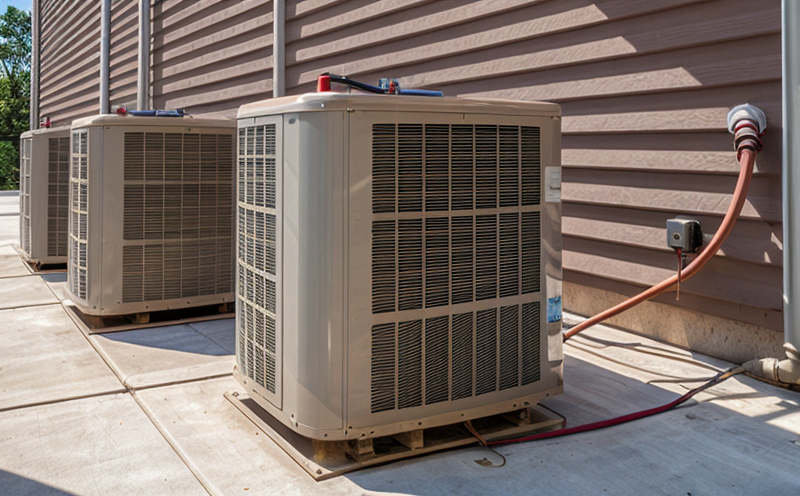ISO 15099-2 Thermal Performance Evaluation
The ISO 15099 series of standards provides a framework for evaluating thermal performance in buildings, with specific focus on the evaluation of heat losses and gains through building elements. This service specializes in the application of ISO 15099-2, which deals explicitly with the determination of the thermal transmittance (U-value) and associated parameters of building components.
In the context of HVAC & Building Systems Testing within the Building & Infrastructure Testing sector, this standard is crucial for ensuring that installed systems meet specified performance criteria. It plays a pivotal role in compliance with international codes such as ISO 15099-2, which mandates the assessment of thermal transmittance through building elements under steady-state conditions.
The evaluation process involves detailed measurement and analysis to determine how effectively the building envelope resists heat transfer. This is particularly important for achieving energy efficiency goals in both new constructions and existing buildings undergoing renovations. The standard covers a wide range of building components, including walls, roofs, floors, and windows, ensuring that all parts contribute optimally to overall thermal performance.
The process begins with careful preparation of the specimen under controlled conditions. This includes setting up the test apparatus according to ISO 15099-2 specifications, which define precise boundary conditions for accurate results. Once prepared, the specimen is subjected to standardized heating and cooling cycles designed to simulate real-world environmental variations.
Data collection during these tests is comprehensive, involving continuous monitoring of temperature differentials across various points within the specimen. Advanced instrumentation ensures precision, reliability, and reproducibility of measurements. The collected data are then used to calculate critical parameters such as U-values, which quantify the rate of heat flow through a given area per unit temperature difference.
The results obtained from these evaluations provide valuable insights into the thermal efficiency of building components. This information is essential for quality assurance and can inform decisions about design modifications or material substitutions aimed at enhancing overall energy performance. Compliance with ISO 15099-2 not only ensures adherence to regulatory requirements but also supports sustainability initiatives by promoting efficient use of resources.
By leveraging this standard, stakeholders in the Building & Infrastructure Testing sector can confidently assert that their projects meet stringent thermal performance criteria. This enhances credibility and trustworthiness among clients and regulatory bodies alike. Moreover, it fosters innovation through continuous improvement efforts based on empirical evidence derived from rigorous testing protocols.
| Standard Number | Title | Year of Publication |
|---|---|---|
| ISO 15099-2:2018 | Determination of the thermal transmittance (U-value) and related parameters of building constructions in steady-state conditions – Part 2: Calculation method for building elements with a single layer of insulation or a single layer of glazing | 2018 |
Why It Matters
The importance of ISO 15099-2 lies in its role as a cornerstone for ensuring accurate and consistent evaluation of thermal performance across different building elements. Proper implementation of this standard helps reduce energy consumption by identifying areas where insulation or other measures can be optimized. This translates directly into cost savings over time while contributing positively to environmental sustainability.
For quality managers and compliance officers, adherence to ISO 15099-2 ensures that projects comply with relevant regulations and industry best practices. It provides a robust framework for establishing benchmarks against which future improvements can be measured. From an R&D perspective, the insights gained from thorough thermal evaluations contribute significantly towards developing more efficient building materials and systems.
In summary, ISO 15099-2 is indispensable for anyone involved in HVAC & Building Systems Testing within the broader context of Building & Infrastructure Testing. Its application fosters a culture of excellence in construction practices that prioritize both functional efficacy and environmental responsibility.





